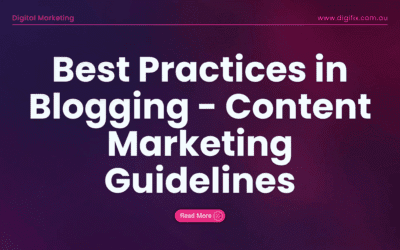Discover the essential features and strategies for success in the world of e-commerce websites. Explore how to navigate online platforms effectively and optimize your website for better rankings. Read more!
Introduction
In today’s digital age, e-commerce websites have revolutionized the way we shop and conduct business. From small startups to large corporations, online platforms provide opportunities for entrepreneurs and consumers alike. Navigating this vast and dynamic world of e-commerce requires a deep understanding of the strategies and best practices that can lead to success. In this article, we will explore the key aspects of e-commerce websites and provide valuable insights for both business owners and customers.
1. Understanding the E-Commerce Landscape
E-commerce refers to the buying and selling of goods and services over the internet. With the global expansion of online connectivity, e-commerce has experienced tremendous growth over the years. To navigate this landscape effectively, it’s crucial to understand the different types of e-commerce websites:
1.1 Business-to-Consumer (B2C) Websites
B2C websites are the most common type of e-commerce platforms. These websites connect businesses directly with end consumers. Examples include online retail stores, marketplaces, and service-based platforms.
1.2 Business-to-Business (B2B) Websites
B2B websites facilitate transactions between businesses. They provide a platform for companies to engage in wholesale trade, procurement, and collaborative partnerships.
1.3 Consumer-to-Consumer (C2C) Websites
C2C websites enable individuals to sell products or services directly to other individuals. These platforms often act as intermediaries, ensuring secure transactions between buyers and sellers.
1.4 Consumer-to-Business (C2B) Websites
C2B websites offer a reverse approach, where individuals provide goods or services to businesses. This model is prevalent in freelancing platforms and influencer marketing.
2. Essential Features of Successful E-Commerce Websites
To stand out in the competitive e-commerce landscape, websites must incorporate key features that enhance the user experience and drive conversions. Let’s explore some of these essential features:
2.1 Intuitive and User-Friendly Interface
A well-designed interface that is intuitive and easy to navigate is crucial for any e-commerce website. Users should be able to find products or services quickly, access relevant information, and complete purchases seamlessly.
2.2 Mobile Responsiveness
With the rise of smartphones and tablets, optimizing e-commerce websites for mobile devices is imperative. Responsive design ensures that the website adapts to different screen sizes, providing a seamless browsing experience for mobile users.
2.3 Secure Payment Gateways
Security is paramount in e-commerce transactions. Integrating trusted payment gateways and implementing secure protocols, such as SSL encryption, instills confidence in customers and protects their sensitive information.
2.4 Robust Product Search and Filtering
Efficient search functionality and comprehensive filtering options help customers find products that meet their specific requirements. Implementing advanced search algorithms and intuitive filtering systems can significantly enhance the user experience.
2.5 Persuasive Product Descriptions and Visuals
Compelling product descriptions, accompanied by high-quality images or videos, play a crucial role in influencing purchasing decisions. They should highlight the unique selling points and benefits of the product or service, helping customers make informed choices.
3. Effective Strategies for Driving Traffic and Conversions
Once an e-commerce website is up and running, attracting traffic and converting visitors into customers becomes the primary focus. Here are some effective strategies to achieve these goals:
3.1 Search Engine Optimization (SEO)
SEO is the process of optimizing a website to rank higher in search engine results. By implementing SEO best practices, such as keyword research, on-page optimization, and link building, e-commerce websites can increase their visibility and organic traffic.
3.2 Content Marketing
Creating valuable and engaging content, such as blog posts, videos, and infographics, can attract potential customers and build brand authority. Content marketing helps e-commerce websites establish a strong online presence and engage with their target audience.
3.3 Social Media Marketing
Leveraging social media platforms to promote products, engage with customers, and drive traffic to the website is a powerful strategy. By creating compelling social media campaigns, e-commerce websites can reach a wider audience and foster brand loyalty.
3.4 Influencer Partnerships
Collaborating with influencers who have a significant following in the target market can amplify brand awareness and credibility. Influencers can showcase products or services, provide reviews, and drive traffic to the e-commerce website through their dedicated fan base.
Conclusion
As the e-commerce industry continues to evolve, navigating the world of e-commerce websites becomes increasingly vital for businesses and consumers alike. By understanding the different types of e-commerce platforms, incorporating essential features, and implementing effective strategies, businesses can maximize their online presence and drive growth. For consumers, it’s crucial to be aware of these aspects to make informed decisions and enjoy a seamless shopping experience.
FAQs (Frequently Asked Questions)
- Q: How do I choose the right e-commerce platform for my business? A: Choosing the right e-commerce platform depends on various factors such as budget, scalability, features, and user-friendliness. Evaluate different platforms based on your specific requirements and consider consulting with e-commerce experts.
- Q: What are some common challenges faced by e-commerce businesses? A: E-commerce businesses often face challenges such as intense competition, cart abandonment, cybersecurity threats, and logistics management. Developing effective strategies and staying updated with industry trends can help overcome these challenges.
- Q: How can I optimize my e-commerce website for better search engine rankings? A: Optimizing your e-commerce website involves conducting keyword research, optimizing product pages, improving site speed, generating quality backlinks, and providing valuable content. Implementing SEO best practices can help improve search engine rankings.
- Q: Is it essential to have social media presence for an e-commerce website? A: Yes, having a strong social media presence is crucial for an e-commerce website. It allows you to engage with your audience, promote products or services, and drive traffic to your website.
- Q: What are some effective ways to increase customer trust in an e-commerce website? A: Building customer trust can be achieved by implementing secure payment gateways, displaying customer reviews and ratings, providing transparent return policies, and offering excellent customer support.





0 Comments